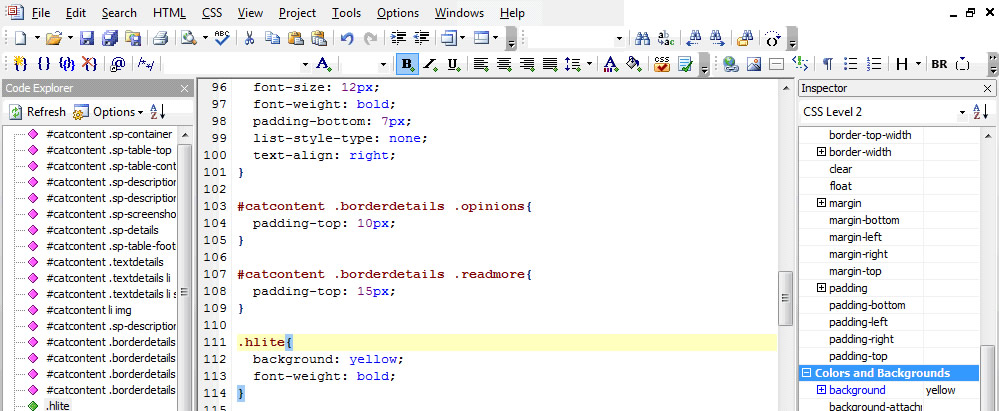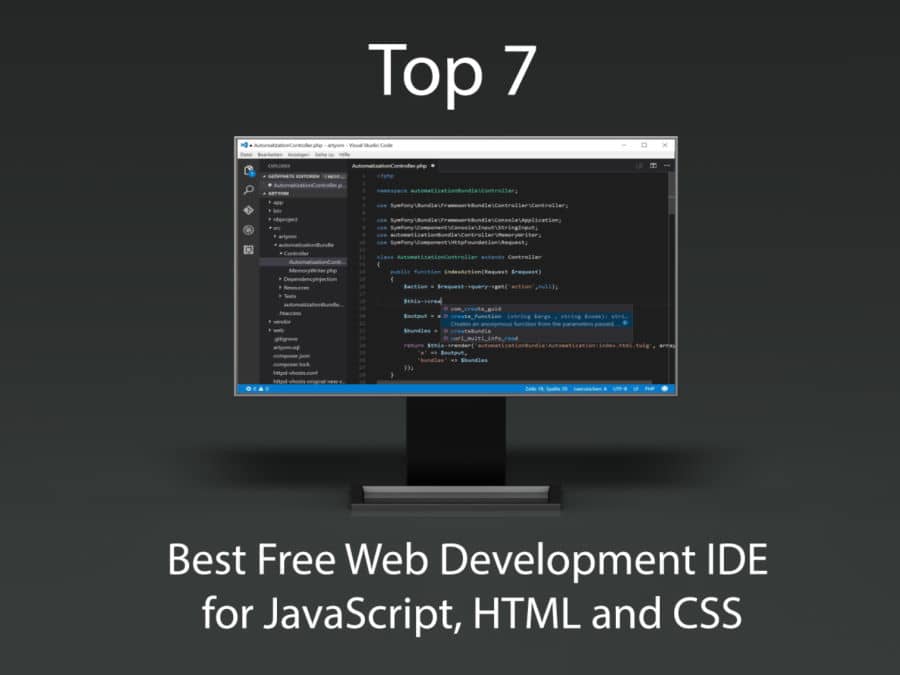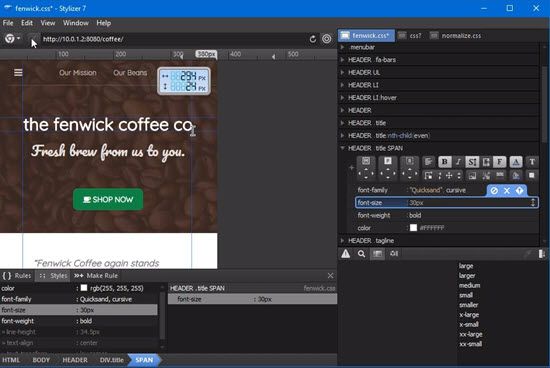
#Best windows css editor keygen

Or, when DevTools has focus, press Ctrl+ Shift+ M ( Cmd+ Shift+ M on macOS). To do this, you can right-click in a webpage and then select Inspect.Ĭlick the Toggle device emulation ( ) button. To debug or test the Media Queries you defined in your CSS: Using separate layouts allows for a one-column layout for mobile devices and multi-column layouts when there is more screen estate available. The most significant use case is to provide your product a different CSS layout depending on the dimensions of the viewport. Media Queries are a way to make your website react to changes in the configuration settings for each user. The Box Model defaults to pixels, but it also accepts other values, such as 25%, or 10vw.

The element's padding is highlighted in the viewport.ĭepending on the size of your DevTools window, you may need to scroll to the bottom of the Styles panel to display the Box Model.ĭouble-click the left margin in the Box Model, which currently has a value of -, meaning that the element doesn't have a margin-left. In the Box Model diagram in the Styles panel, hover on padding. Right-click the Change My Margin! text, and then select Inspect. Use the Box Model interactive diagram in the Styles panel to change the width, height, padding, margin, or border length of an element. Here's the result of toggling the :hover pseudostate on an element: The background color changes like before, even though you aren't actually hovering over the element. Right-click the Hover Over Me! text, and then select Inspect. DevTools supports :active, :focus, :hover, and :visited. Use the Styles panel to permanently apply a CSS pseudostate to an element. The color_me class is applied to the element using the. If the Add A Class To Me! element has any other classes applied to it, you are also able to toggle each from here. A checkbox appears below the Add new class text box, where you can toggle the class on and off. Type color_me in the Add new class text box and then press Enter. DevTools reveals a text box where you can add CSS classes to the page element that you're inspecting. Right-click the Add A Class To Me! text, and then select Inspect.Ĭlick. To display how an element looks when a CSS class is applied to or removed from an element, see the Styles panel.

The background-color:honeydew declaration is applied to the element using the element.style section of the Styles panel: In the DOM Tree, an inline style declaration applied to the element is displayed. Type background-color and then press Enter. Right-click the Add A Background Color To Me! text, and then select Inspect.Ĭlick element.style near the top of the Styles panel.

Open the CSS Examples demo page in a new window or tab. Use the Styles panel when you want to change or add CSS declarations to an element.įirst, we recommend doing the View the CSS for an element tutorial section, above. On the page, in the Value of padding: text box, enter the value. In the aloha class, find the value for the padding style and copy it. This rule is displayed, because it is being applied to the Inspect Me! element. In the Inspect Me! element, find the aloha class rule. In the Styles panel, the Inspect Me! element is highlighted. In DevTools, on the Elements tool, select the Styles panel. On the page, in the Value of data-message: text box, enter the value. In the Inspect Me! element, find the value of the data-message attribute and copy it. In DevTools, on the Elements tool, in the DOM Tree panel, the Inspect Me! element is highlighted. Right-click the Inspect Me! text, and then select Inspect. To do this, right-click the link, or press and hold Control (Windows, Linux) or Command (macOS) and then click the link. Follow these interactive tutorial sections to learn the basics of viewing and changing the CSS for a page by using DevTools.


 0 kommentar(er)
0 kommentar(er)
